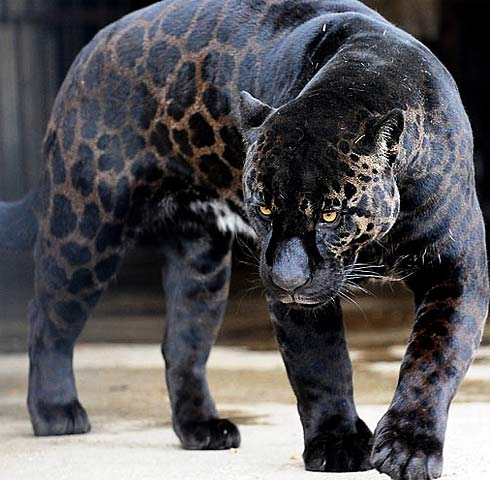 Jaguar: the largest of the big cats in the Americas and a God of the Underworld for the Maya
Jaguar: the largest of the big cats in the Americas and a God of the Underworld for the Maya
This makes the jaguar the third largest cat in the world (behind the lion and the tiger), and the largest cat in the western hemisphere.
Believed to have originally evolved in Asia before crossing over into North America via the Bering land-bridge, the stealthy cat of the Americas has a current range that includes Argentina, Belize, Bolivia, Brazil, Colombia, Costa Rica (particularly on the Osa Peninsula), Ecuador, French Guiana, Guatemala, Guyana, Honduras, Mexico, Nicaragua, Panama, Paraguay, Peru, Suriname, the Southern United States and Venezuela.
However, its population in the United States has greatly decreased in recent years as a result of hunting and habitat loss.
The jaguar prefers to live in dense rainforests, but can survive an any number of different habitats, although it usually will stay in those that include bodies of water (the jaguar is actually a very gifted swimmer).
As you might know, most jaguars are covered in beautiful spots. However, there are a small percent (6%) that are all black (but sometimes they may still have visible spots) and are known as “black panthers”. The name black panther can also be used to describe other big black cats (of the Panthera genus) like leopards and cougars.
The jaguar is an apex predator, and uses a stalking method to hunt whatever creature it wants. When they jaguar catches its prey, it uses the unique method of delivering a bite directly to the head of the other animal, damaging the brain and causing instant death.
This method is so effective because of the jaguar tremendously powerful bite, which can penetrate bone and shell in its first attempt.
They can sometimes kill prey that weigh much more that the cats themselves do, sometimes up to almost 700 lbs (318 kg). They are mostly active at dawn and dusk, so they can move in the cool twilight to hunt.
Jaguars are currently listed by conservation authorities as ‘near threatened’, and are therefore the subject of various conservation efforts.
Much of their previous range has been reduced, like in the countries of El Salvador and Uruguay where they are now totally extinct.
For the ancient Maya, the jaguar had the ability to cross between worlds, and daytime and nighttime represented two different worlds for them.
The living and the earth are associated with the day, and the spirit world and the ancestors are associated with the night. As the jaguar is quite at home in the nighttime, it was believed to be part of the underworld; thus, “Maya gods with jaguar attributes or garments are underworld gods”
In honor of the majestic jaguar — the maya celebrate the “Ix” or Jaguar day in the Mayan Tzolkin Calendar — These Tzolkin days are very special and they truly elicit deep ancestral reactions in people.
There is no doubt that many of us humans feel connected or strongly identified with this feline. (Please share with us your thoughts about how you connect with the feline side of you).
Would you know any local names for this animal? In the Orinoco plains of Colombia and Venezuela it is sometimes known as the “wooly hands” or “mano e’ lana” because it usually does not make noticeable sounds when walking on the jungle’s floor.



De Jaguar In Suriname: Jaguar: The Largest Of The Big Cats In The Americas And A God Of The Underworld For The Maya >>>>> Download Now
ReplyDelete>>>>> Download Full
De Jaguar In Suriname: Jaguar: The Largest Of The Big Cats In The Americas And A God Of The Underworld For The Maya >>>>> Download LINK
>>>>> Download Now
De Jaguar In Suriname: Jaguar: The Largest Of The Big Cats In The Americas And A God Of The Underworld For The Maya >>>>> Download Full
>>>>> Download LINK